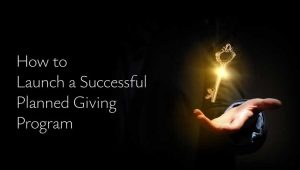
Difference Between Charity and Philanthropy
Philanthropy is a longer-term option for making gifts to help people in need over multiple years’ time while charity focuses on immediate relief to the needy.
Home » Planned Giving Marketing » Page 3
CATEGORY
Strategies and best practices for communicating planned giving effectively. Covers messaging, content development, digital presence, donor education, and positioning planned giving as a core component of fundraising strategy.

Philanthropy is a longer-term option for making gifts to help people in need over multiple years’ time while charity focuses on immediate relief to the needy.

Whiners don’t win—leaders do. If your comfort zone is begging for 2–4% raises and hoping for a part-time job post-retirement, this isn’t for you. Hardball leaders don’t play it safe—they make bold moves, take calculated risks, and push their teams toward excellence. The nonprofit world is plagued by a softie mentality, where comfort trumps results. But real impact demands urgency, accountability, and grit. Step up, toughen up, and lead like a winner—because playing it safe won’t get you to the top.

Most legacy societies fail quietly—created with enthusiasm, then forgotten. This guide breaks that cycle with a proven roadmap to build or revive a legacy society that truly works. You’ll learn how to choose a name that resonates, attract founding members, keep them engaged, and most importantly—sell through stories, not just tell them. Whether you’re starting from scratch or dusting off an old initiative, this is your actionable playbook for legacy giving that inspires and endures.

Some nonprofits are exploring expensive analytics platforms for planned giving—complete with dashboards, donor heatmaps, and predictive scoring tools—”intelligence tools” as they are called. Often, these are rebranded business intelligence tools that have been given a “legacy twist” and called innovation. But here’s the question: Is this the right tool for organizations like yours? These platforms can generate meaningful insights… if you have 2,000,000+ prospects to analyze. But when your donor file has less than 100,000 people, do you need predictive algorithms to tell you who cares about your mission?

Master your elevator pitches. You have eight seconds to make an impression—are you ready? Whether it’s a reunion, a luncheon, or a chance encounter, your ability to start a meaningful conversation about legacy giving matters. This guide offers 25 ultra-brief, donor-specific elevator pitches you can memorize and use anywhere. Organized by giving vehicle and donor motivation, each one is crafted to spark curiosity and open the door to deeper discussion.

Through legacy gifts, donors like Angela and Terrell Richards and Hilda and Arnulfo Miramontes are transforming lives at St. Jude Children’s Research Hospital. Their stories show how planned giving—through wills, trusts, and heartfelt commitments—ensures children battling catastrophic illnesses receive lifesaving care, free of charge. This article honors their legacies and invites readers to consider their own. Because leaving a legacy isn’t about wealth—it’s about impact, compassion, and giving children a future worth fighting for.

What Is Planned Giving and Why Does It Matter? Planned giving, also known as legacy giving, is the art of securing future gifts from donors through their estate plans. These gifts are often the largest and most impactful contributions a donor will ever make—with the average planned gift ranging from 200-300 times larger than a typical annual donation. Consider how a small environmental nonprofit transformed its future with just three bequests in its first year of planned giving: these gifts

A bad blog doesn’t just look lazy—it proves it. In the world of planned giving, where trust and credibility matter most, an outdated or lifeless blog can quietly sabotage donor confidence. Learn why showing up halfheartedly online is worse than not showing up at all—and how to fix it before it costs you.

Most people create a will or trust and never look at it again. But life changes—marriages, births, moves, asset shifts—can render your estate plan outdated and ineffective. Failing to update it may mean your assets go to the wrong person or your heirs face unnecessary stress and taxes. Reviewing your estate plan ensures your wishes are honored and your legacy protected. It’s not morbid—it’s responsible planning.

A retired farmer wanted to donate $202,000 in grain. One charity said no—“We only take cash and stocks.” Another said yes, turned it into a high-yield gift annuity, and gained a grateful donor for life. The first charity? Left with nothing. This isn’t about generosity—it’s about competence. When nonprofits cling to outdated rules, they don’t just miss gifts. They drive donors away. Inflexibility isn’t policy. It’s failure.